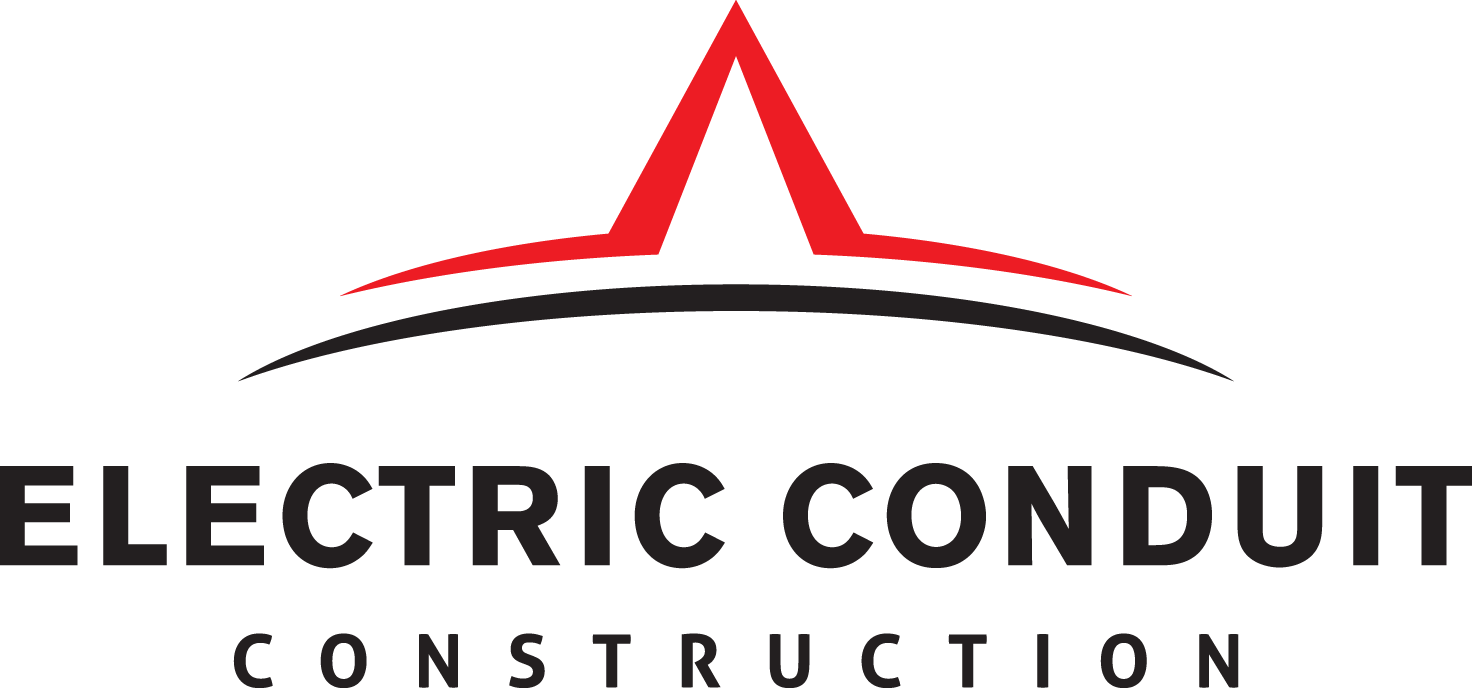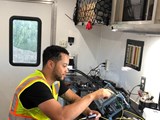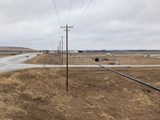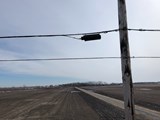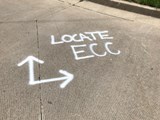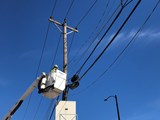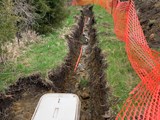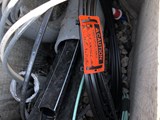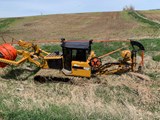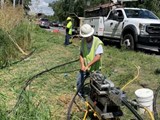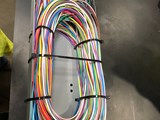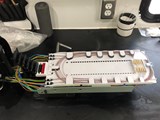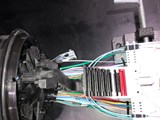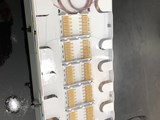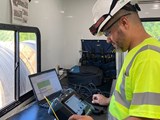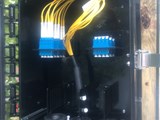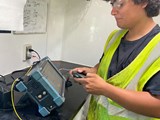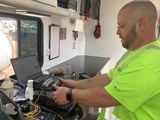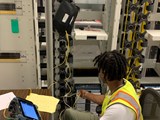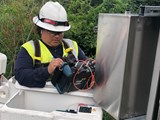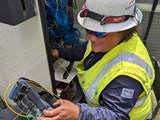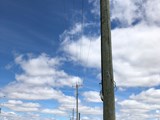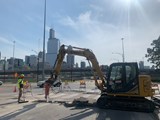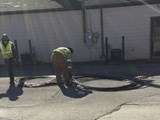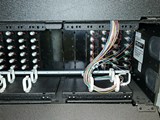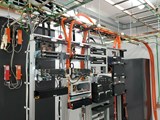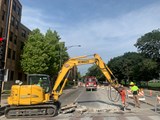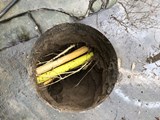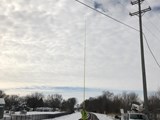Electric Conduit Construction Fiber Capability
THE NEED FOR FIBER
Utilities and Telecommunication companies utilize fiber because they need bandwidth, speed, reduced latency, and security. Fiber offers all of this, and the result is finer control of equipment and facilities as well as better performance for communication devices. As companies and consumers get used to these increased levels of performance the demand for OSP (Outside Plant) and ISP (Inside Plant) fiber grows.
In 2015, to meet the needs of our customers, Electric Conduit Construction (ECC) assembled a team of knowledgeable project managers, superintendents, and skilled tradesmen to take on complete, turn-key OSP projects.
This has led to projects ranging from small urban rings and nodes for small cell. To more extensive 20 – 60 - mile rings with drops, risers, and interconnects to control electric utility equipment. From a constructability standpoint, the greater the population density the more complex the project becomes.
URBAN OSP
In urban areas planning includes job site walk downs, utility locates, potholing to reveal the marked utility and its depth. Investigation to located utilities that are suspected but not marked and more exploratory potholing. Only after this work is completed can the actual work of installation begin. At this point planning how, the fiber is to be installed is important as a means to eliminate or reduce the number of butt splices in the system. One of our goals is to see beyond the customer’s design and look for ways to eliminate splices. Some plants utilize only underground pathways. While others require both aerial and underground. On the latter the judicious placement of slack can often eliminate a splice.
Most of the urban plants require placement of fiber in conduits This helps from a maintenance standpoint and adds a layer of protection to the cable by placing it inside the conduit. It is also helpful when part of the plant is in existing duct banks running from manhole to manhole. In this case it is much easier to interconnect with conduit.
Horizontal directional drilling (HDD) offers another good option for OSP in urban areas. Drilling is less disruptive to neighborhoods and traffic. The drill will carry the conduit below existing utilities and it is a simple process to blow the fiber through the conduit. Drill shots can very 100’ to 1,000’ and multiple conduits can be pulled back at one time. HDD is a highly productive way of placing fiber and power cables. ECC has utilized HDD technology since the first machines came on the market. We have extensive knowledge and experience in this area and it is a compliment to fiber installation.
Safety
In all ECC’s underground work there are two guiding principles, the safety of our crews and the public, and the avoidance of utility strikes. Safety hazards in this type of work are numerous and include:
- Electrical shock protection
- Fall protection
- Trench safety, manhole safety
- Hazardous atmosphere
- High potential energy source protection
- Slip, trip and fall hazards
- Rigging and lifting
Personal protective equipment includes specialized electrical protective equipment, hard hats, safety glasses, steel toe boots, safety vests and gloves.
Safe work plans are required for every project and toolbox talks reinforce the days work and safety plan each day.
SPLICING URBAN OSP
Fiber splicing is a skill that requires a keen eye, full color vision, patience, and skill. ECC technicians are trusted to splice on customer’s live systems. We our among a very select group of contractors who can perform this work on live cable. In urban systems butt and branch splices are common and required to connect the various cellular nodes together into a cohesive and functioning network. Typical installations use single mode, ribbon fiber. But any type of fiber can be encountered. When splicing into existing systems some splice cases, especially those in manholes, have been touched by so many hands that they need serious rebuilding and resealing, to add additional cables and fiber splices.
Splice trailers provide a working environment that helps us maintain quality splice work. The trailers are properly illuminated, heated, and cooled with ample bench space for performing the splice and testing that is required to assure that the splice is good and meets the transmissibility standards for the given type of fiber. ECC splicers are well trained and can handle any type of cable including, micro, buffer tube, central tube, and ribbon. As well as the armored varieties and optical fiber nonconductive riser (OFNR).
Suburban & Rural OSP
ECC’s suburban and rural projects are characterized by longer distances and installations that combine plowing, drilling and aerial work. The same attention to detail that was applied in urban settings is used in the more expansive rural areas, but the emphasis is different. Utility damage prevention is still a priority but there are less of them to deal with. Site conditions over a 50 or 60 mile line of lay can vary dramatically. Our PM’s will analyze the soil and geology along every foot of ground where open-cut or directional drilling is used. PM’s and Superintendents from the fiber division will determine where slack should be placed to minimize butt splices. Superintendents from our power division will trace the neutral wire on aerial installations and map out the safest placement where the minimum approach distance (MAD) can be maximized. These planning efforts save our customers time and money. Knowing ground conditions well in advance helps us get the right equipment in place early. Elimination of splices cuts down on labor costs, and understanding the neutral path enhances safety for our crews.
When the planning is complete, locates are called and the work of installation begins. At times ECC will have HDD, plow, and aerial crews working simultaneously on one project.
Using these methods ECC will install over 1,000,000 feet of fiber every year, and we fully expect this number to increase.
Suburban & Rural Splicing
Butt splicing is common on long haul projects. However electric utility customers require laterals to sub-stations and other facilities along the route. Ribbon cable splices are faster to make than stranded cable but our crews our adept at each type of splice. As more equipment is equipped with sensors the use of micro-fiber will increase and be integrated into the overall system.
It can take up to one year to train a splice technician. Our mentoring program places new technicians with seasoned journeymen during training and when the training is complete the mentoring does not stop. Frequent inspections help us maintain quality from opening a case to closing it and sealing it.
Outages, Troubleshooting & Audits
Outages occur for many reasons. Utility strikes by other contractors, directional drilling operations, Excavation work, storms, and accidents, to name a few. In each of these circumstances data stops flowing through the network. Then the phones start ringing.
A large part of the work that ECC Splicers perform daily is the repair of outages. We specialize in these types of repairs. ECC's customers have confidence that ECC can locate issues and make repairs in a safe and timely manner. ECC’s broad capabilities in construction and our inventory of equipment augments our splicing capabilities. Outages may require excavation, or aerial support. ECC makes this a seamless process for our customers by supplying the equipment and manpower to repair any type of outage.
ECC can:
- Locate the outage
- Expose it – pull slack or pull new cable
- Make a splice repair
- Set the new case in a hand hole or suspend it
- Return the circuit to service
ECC will do this work quickly, to completion and supply all aerial or underground construction work as needed.
Integration poses unique challenges for customers. A circuit can be planned, infrastructure placed and then a delay occurs. When the circuit is ready to be connected the fiber lacks continuity and the circuit cannot be completed. If this happens there is either a break or the fiber has been allocated to another device. Our customers depend on us to either find the outage and repair it or find alternate fiber and connect a new circuit.
Audits of splice enclosures help engineers understand how existing fiber is being allocated. ECC Splicers are often tasked with mapping splice cases. Usually these are cases that are opened frequently by other contractors, and over time the connections within the case become so numerous that the documentation becomes obsolete. A fresh audit and the resulting cut sheet provide circuit engineers with the most accurate information to design new circuits from existing cabling.
Summary
ECC’s broad capability with Outside Plant (OSP) fiber construction contributes to our customer’s bottom line in time saved, streamlining designs to eliminate splices and the ability to perform make-ready work by completing the overhead distribution work, as well as the utility transfers. In addition, this same capability contributes to our ability to do turnkey outage work, integration and audits.
We continue to expand our knowledge and train our trades people and splicers to be careful and efficient with their work. We are here to build the highest quality infrastructure possible, for our customers.
Electric Conduit Construction (ECC) is a 60-year-old utility construction company specializing in underground placement of conduit and associated structures; aerial and underground fiber placement; overhead make-ready and distribution work; directional drilling (HDD) and civil work. ECC has a strong safety and training program, and a career-oriented community development program for young adults seeking employment in the construction trades. For more information go to www.ElectricConduitConstruction.com
